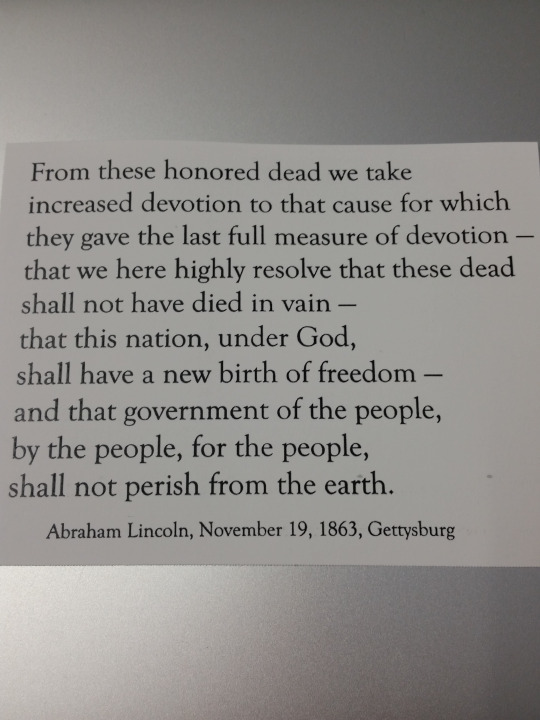via
http://ift.tt/2kh6851:
Following up on that post from my queue about food scarcity–
An enormous proportion of the food grown in the United States, excluding of course the corn/soy monstrosity that is most of our agriculture, is done so using immigrant labor, legal or illegal. The current climate of extreme government hostility toward immigrants of basically all stripes is absolutely going to cause some kind of crisis in the agricultural system of the United States. Will it mean high prices and food shortages? Maybe, maybe not. Should we all be planting Victory Gardens? Maybe, or maybe we don’t all have yards and green thumbs.
(A smaller version of this crisis in Georgia in 2011 was slated to be solved by conscripting prison labor, so if you find the idea of eating food harvested by literal actual slaves unappetizing, you should know that’s not an unfounded fear. I can’t find a source for whether they really did or not, but it was suggested, along with other improbable ideas.) (Interesting article about agricultural labor, related to the crisis.)
There’s plenty more to research and discuss about that issue, and I encourage anyone interested to do so. But my point is, one thing you as a consumer can do to try to take back some kind of control over where your food comes from is to seek out and join a CSA. (What’s a CSA? The acronym stands for Community Supported Agriculture, and I’ll link to more resources in a minute, but the basic premise is that you pay a flat fee to subscribe to a farm, and then get a box every week or so with whatever they’ve grown. There’s more to it, and that won’t work for everyone and I’ll discuss that at the end, but that’s the basic idea to start with.)
They are more common than you’d think, and in many more areas than you’d think, and now is the time to sign up for them, while they’re still buying their seeds and making their plans in most of the US growing zones.
(What if the CSA relies on migrant labor? Well, you can ask them. Some CSAs have community labor pools, where you can get a reduced price on your share if you come help, or some other consideration; clearly, that kind of joint is going to be pretty open with you about where their labor comes from. Also, if their usual migrant guy got his visa denied, you’ll know what their plan is to deal with it.)
So. Localharvest.org is a good starting place. They have a solid overview of just what it’s all about, and a comprehensive index you can search.
USDA.gov has a page on CSAs that includes a search function, and also has more comprehensive information about sustainable agriculture.
This page, which I just randomly found by Googling, has a great overview of what a CSA is and the risks, benefits, and drawbacks, as well as advice on how to find one.
As that last link points out, if you are not in the habit of cooking and don’t really love vegetables, a CSA may not be for you. In that case, what should you do about your food?
Buying local is a good start. Some of the CSAs you’ll find may also have farmstands or other retail outlets associated with them. If there is a local farmer’s market, they’re also a good starting point. I’m not saying you should do all of your shopping at a farmer’s market which may not be close to you, at a convenient time, or actually all that picky about who sells what there– some are producer-only markets, but others will just let wholesalers sell imported stuff right alongside local farmers with no real differentiation.
The point is: first figuring out where your food comes from gives you a lot of power in deciding what to buy and from whom.
I would advise, honestly, even if you don’t want to join a CSA, find a local one and talk to the person that runs it. Ask them what the local farming scene is really like. You might be surprised what you learn.
In general, there are so many resources available online now because of the local food movement– look up locavores, and teach yourself about food miles– that there’s a wealth of information to be found. This post is just meant as gentle encouragement to look into it. Nobody has the energy to think about these things all the time, but if you look at your local food scene you might be surprised what you can find. And this is an area where a little bit of well-directed interest has the potential to make a huge difference. You can really make great connections with local people this way. It’s not a new movement, but it’s still a fresh one, and there’s so much to do.
Our food system is broken, but we can fix it. In so doing, I hope, we can protect our immigrant brothers and sisters, whose place in this broken system is so precarious. The labels in the grocery store are misleading and confusing and not nearly as regulated as you’d think; buying organic is nice but it may or may not make a difference, especially as this administration guts consumer protection agencies. Reaching out to your local food community may be a better start at making a difference, and you can enrich more than your diet.












